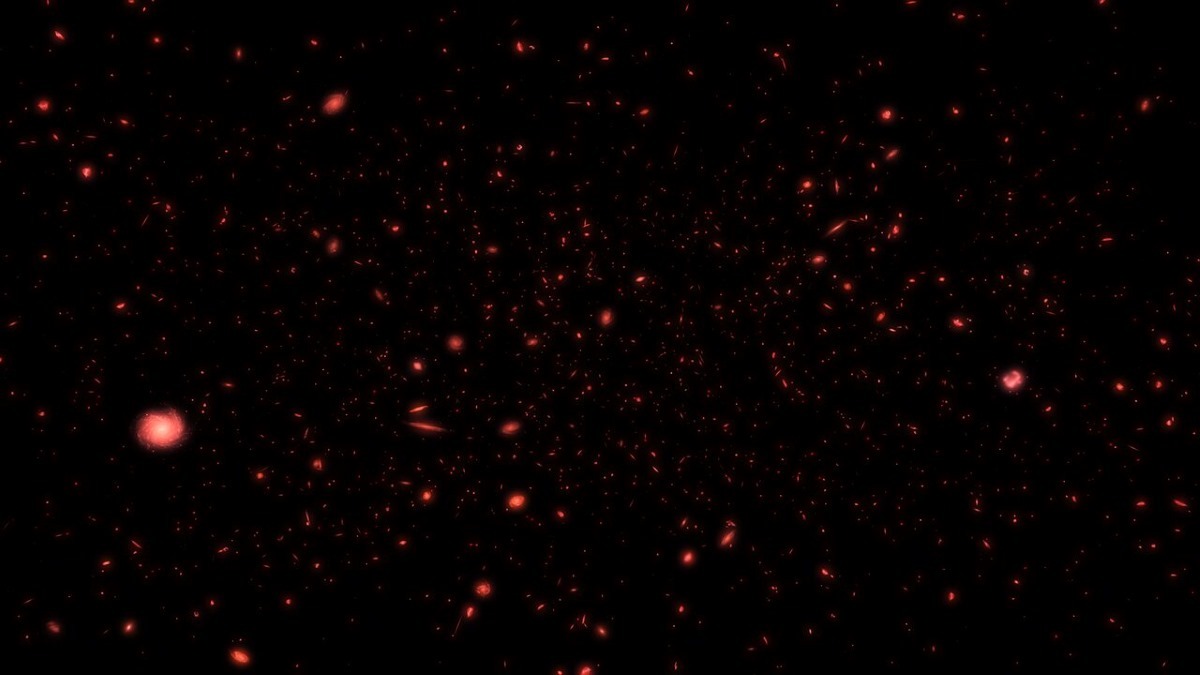7.11.2025

Artist’s impression of the early universe. Credit: ESA/Hubble, M. Kornmesser.
Astronomers believe they have found the earliest stars which began forming just 200 million years after the Big Bang.
Population III (Pop III) stars are the hypothetical first generation of stars in the universe. They are theorised to have formed out of the primordial gas produced by the birth of the cosmos which took place about 13.8 billion years ago.
These first stars were likely massive – up to 1,000 times bigger and 1 million times brighter than our Sun.
Being so big, the Pop III stars would have burned bright and fast, living for just a few million years. When they died in violent supernova explosions, the next generation of stars, Population II, were born to create the first galaxies. The most recent generation of stars, Population I, includes our Sun.
Despite their size and luminosity, Pop III stars have avoided detection.
This is because they were so fleeting and existed so long ago.
A new paper published in the Astrophysical Journal Letters suggests that a system spotted using the James Webb Space Telescope bears all the signs of a group of Pop III stars.
The authors say theoretical predictions show Pop III stars should have 3 basic characteristics:
- they formed in small dark matter halos,
- they were extremely massive, and
- they arose in small clusters.
Other Pop III star candidates have failed to meet all 3 criteria.
The system studied, called LAP1-B, is the first object consistent with these characteristics, the authors argue.
LAP1-B sits in a dark matter halo about 13 billion light-years away, meaning it is being observed at a time when the universe was just 800 million years old.
The authors say that first generation stars could have formed in this time period and LAP1-B could be among the earliest that telescopes can see “given current observable limits, despite the fact that most Pop III systems form much earlier”.
LAP1-B is gravitationally lensed by the galaxy cluster MACS J0416 which is 4.3 billion light-years from Earth. This means that LAP1-B is magnified because of the bending of light around the nearer galaxy cluster.
The magnification allowed astronomers to take detailed measurements of LAP1-B. Spectral analysis showed low levels of metal in the cloud around the system – consistent with the kind of material in which Pop III stars would have recently died.
The researchers are cautious, though, saying further studies are needed to confirm without doubt that LAP1-B is a system of Pop III stars.
“LAP1-B may only represent the tip of the iceberg in terms of the study of Pop III stars with gravitational lensing from galaxy clusters,” they write in their conclusion.
Quelle: CONNECTSCI
